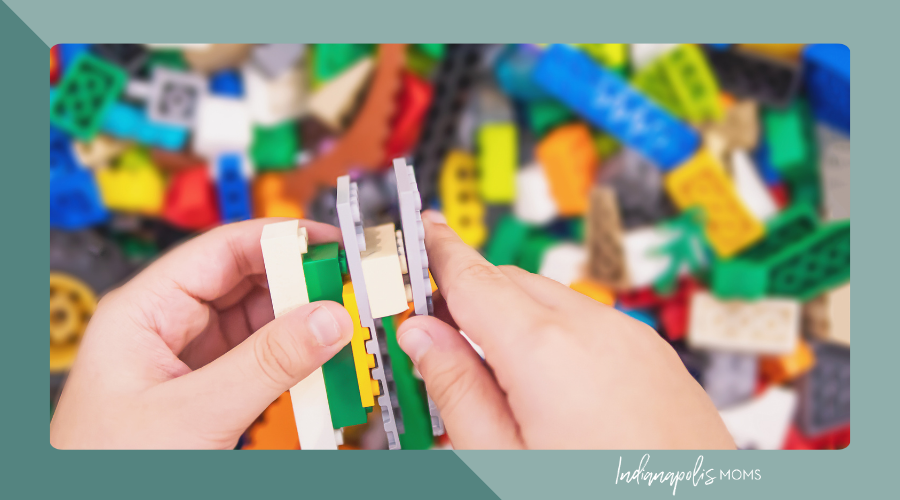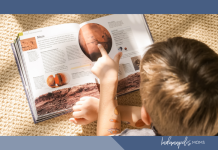 This past school year (2024-2025) held many firsts for me. It was the first time my daughters were both in school (kindergarten and 2nd grade), the first time I held a position on the school’s PTO board (proud treasurer over here), and the first time that I decided I’d host an after-school club! (I’m not sure what I was thinking so don’t even ask me, haha!)
This past school year (2024-2025) held many firsts for me. It was the first time my daughters were both in school (kindergarten and 2nd grade), the first time I held a position on the school’s PTO board (proud treasurer over here), and the first time that I decided I’d host an after-school club! (I’m not sure what I was thinking so don’t even ask me, haha!)
While I am the daughter of a former schoolteacher and have grown up around clubs my entire life, I had never organized one from scratch. While I found some great tips online, there wasn’t anything definitive that I could use to say, ‘this is what truly helped me get started.’ So I thought I’d throw something together in the hopes that it helps the next excited parent who wants to bring some Lego fun to the hands of little learners!
Before we get started, I will say that every school has different rules and requirements regarding who can start and run an after-school club. For our school, I needed to have passed a background check and have my proposal for a club approved by the assistant head of school.
Step One: Find out the requirements and draft your club’s proposal. Take a minute to decide how many kids your club (and your sanity) can handle at one time. You’ll also want to figure out the age ranges you’re ok with working with, the frequency of the club and the length. This is what I used to submit my proposal. Here’s hoping it helps someone else out!
Description: The [School Name] LEGO® Club is designed to foster creativity, collaboration, and problem-solving skills for young learners through engaging, hands-on building experiences. Our goal is to create a fun, supportive environment where children can explore their imagination, develop critical thinking skills, and learn through play.
Day/Time/Frequency: Lego club will meet on Tuesdays from 3:45 to 5:00 weekly until the end of the school year
Age Ranges: Learners who are in Kindergarten through 3rd grade are eligible to sign up for LEGO® club
Limit: LEGO® club will be able to support up to 15 learners.
Step Two: Once your proposal has been accepted and you’re cleared to start getting organized, you should begin asking around for used LEGO® and containers to house LEGO®. If your school has a Facebook group or a public portal that you can post on, be sure to ask there! I also had a lot of luck posting in my local “Buy Nothing” group and on neighborhood apps. Keep in mind that when you receive the LEGO®, you’ll need to sanitize and sort through them to ensure there are no broken pieces. If you’re a LEGO® snob like yours truly, you’ll also want to sort out the odd Mega Block or other Flego.
Step Three: It’s important for every club to have a set of rules. You don’t have to go in depth, nor do you need to be incredibly rigid, but it’s best to go over the rules on the first day and have them present for the club to see at every session afterwards.
Sample Rules:
- Respect the space. No running around or roughhousing, we’re here to build LEGO® creations!
- Respect others. That means everyone has to share and help each other out. Teamwork makes the dream work.
- Respect yourself. Stay positive. We don’t compete with or put down other club members; we build just for fun!
- Respect the Legos. We don’t throw LEGO® bricks. We don’t eat LEGO® bricks. We don’t shove the LEGO® bricks up our nose. We don’t shove the LEGO® bricks up our friend’s nose. And all the LEGO® bricks have to be cleaned up and put away at the end of the LEGO® club.
- Leave your LEGO® at Home. I know you probably have amazing builds at home, but please don’t bring them to Lego club because we don’t want them to get mixed in with the club’s Lego.
Step Four: Come up with ‘themes’ for each session and always have a backup plan for those who finish tasks early. I would have some fun facts in your back pocket that you can use when you need to wow your audience. I also like to print out LEGO® coloring pages to have on hand in case someone isn’t feeling like building that day or in case they finish their challenge early. Don’t forget to pack the markers or crayons!
Sample Themes:
- Name Challenge
- Marble Run
- Build Upside Down Challenge
- Hidden Treasure
- Build a Playground
- Free Build
- Build a Bridge
- Create a Lego animal
Sample Fun Facts
- There are Lego pieces called SNOT (Studs not on top)
- Lego plural is LEGO, you do not add a ‘s’ to the end
- There are approximately 86 pieces of Lego per person in the entire world!
- One Lego piece can withstand up to 950 pounds of weight!
Final step: Have fun! I was in awe of so many of the amazing builds I got to watch the students build. They came up with ideas that I wouldn’t have expected, and they especially enjoyed being challenged by building upside down or building sideways. They also really loved building to hide a treasure so that they could stump all their friends. I don’t like posting photos of students without their parents’ permission, so I ended up creating a Google Slides presentation where I only took photos of their creations and posted them there, allowing them to share their builds with their parents at home.
Have you started a school club before? How did it go? Do you have any other suggestions to share?








